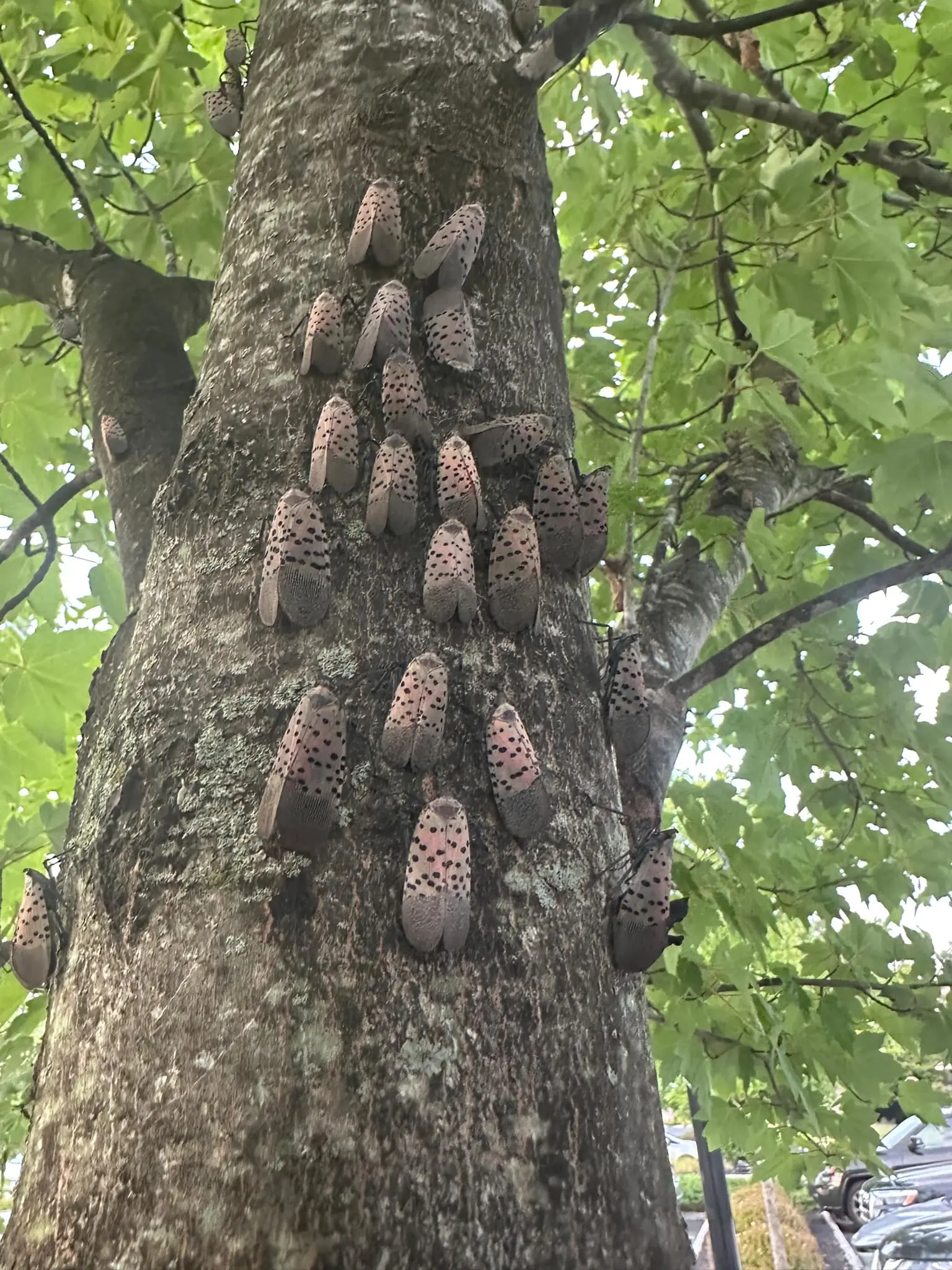They’re Here: Spotted Lanternflies Invade New Jersey – Here’s What You Need to Know and How to Stop Them
TRENTON, NJ – They’re back, and they’re everywhere. The spotted lanternfly, an invasive pest from Asia, is swarming across New Jersey this year, threatening agriculture, forests, and even backyard barbecues. With their distinctive red, black, and white wings, these foreign invaders are not just a nuisance—they’re a serious problem that demands immediate action. Here’s what you need to know about the spotted lanternfly and how you can help stop their spread.
What Are Spotted Lanternflies?
The spotted lanternfly (*Lycorma delicatula*) first arrived in the United States in 2014, hitching a ride from China to Pennsylvania. Since then, it has spread rapidly, with New Jersey now a hotspot for infestations. These leafhoppers feed on the sap of over 70 plant species, including grapevines, fruit trees, and hardwoods, leaving behind a sticky residue called honeydew that promotes mold growth and damages crops.

In 2024 alone, New Jersey’s wine industry reported losses in the millions due to lanternfly damage, and the pest’s appetite threatens everything from apple orchards to maple trees. The lanternfly’s life cycle makes it particularly hard to control. Eggs, laid in late fall, survive winter and hatch in spring, with nymphs maturing into adults by summer. Right now, in August 2025, adult lanternflies are at their peak, hopping and flying across neighborhoods, parks, and farms.
Why Are They a Problem?
Spotted lanternflies don’t just harm plants—they disrupt ecosystems and economies. Their feeding weakens trees, making them vulnerable to disease, and their honeydew attracts other pests like ants and wasps.
In New Jersey, where agriculture is a $1.5 billion industry, the lanternfly’s spread could devastate crops like peaches, hops, and grapes. Homeowners aren’t spared either; lanternflies can overrun yards, leaving sticky messes on patios and cars. The New Jersey Department of Agriculture has labeled the lanternfly a “significant threat,” with infestations reported in all 21 counties.
Urban areas like Newark and Jersey City are seeing swarms, while rural regions like Hunterdon and Warren Counties face severe agricultural impacts. If left unchecked, experts warn, the lanternfly could alter New Jersey’s landscape for decades.
What You Need to Know
Adult lanternflies are about an inch long, with grayish wings speckled with black spots and bright red underwings visible when they fly. Nymphs are black with white spots, turning red as they mature. – **Favorite Targets**: Lanternflies love the Tree of Heaven (*Ailanthus altissima*), an invasive plant common in New Jersey, but they’ll also feed on grapes, apples, cherries, and oaks. – **Signs of Infestation**: Look for sticky honeydew on plants or surfaces, sooty mold, or clusters of lanternflies on tree trunks and branches. – **Spread**: Lanternflies are excellent hitchhikers. They lay eggs on almost any surface—cars, trailers, firewood, even outdoor furniture—making human activity a key factor in their spread.
What You Can Do to Stop Them
New Jersey officials and residents are being urged to take action to curb the lanternfly invasion. Here’s how you can help:
Kill on Sight: If you see a spotted lanternfly, squash it. Experts encourage stomping or swatting adults and nymphs to reduce their numbers. “Every lanternfly you eliminate prevents hundreds of eggs from hatching next year,” says Dr. Emily Carter, an entomologist with Rutgers University.
Check for Eggs: From late summer to early spring, inspect outdoor surfaces for egg masses, which look like grayish, mud-like smears. Scrape them into a bag with rubbing alcohol or hand sanitizer to kill them. Common spots include tree bark, patio furniture, and vehicle undercarriages.
Remove Tree of Heaven: If you have this invasive tree on your property, consider removing it with professional help, as it’s a primary host for lanternflies. Replace it with native species like red maple or dogwood.
Use Traps and Sprays: Sticky bands or circle traps on trees can capture nymphs and adults. Contact your local cooperative extension for approved insecticides safe for home use, but avoid broad-spectrum pesticides that harm pollinators like bees.
Inspect Before You Move: Before leaving your property, check vehicles, trailers, and outdoor gear for lanternflies or egg masses to prevent spreading them to new areas.
New Jersey’s “Check Your Ride” campaign emphasizes this step, especially for those traveling through quarantine zones. 6.
Report Sightings: If you spot lanternflies, report them to the New Jersey Department of Agriculture at badbug.nj.gov or by calling 1-833-BAD-BUGS. Your reports help track the infestation and guide control efforts. ### Community Efforts and State Action The state is stepping up its response with increased funding for lanternfly control, including $10 million allocated in 2025 for research and eradication programs.
Municipalities are hosting “Stomp Out the Lanternfly” events, encouraging residents to join in community-wide efforts to kill the pests. In Vineland, local vineyards have partnered with Rutgers University to test biological controls, like introducing natural predators, though these are still in early stages.
“We’re all in this together,” says New Jersey Agriculture Secretary Maria Gonzalez. “From farmers to homeowners, every action counts in protecting our state from this invasive threat.”
The spotted lanternfly may be small, but its impact is massive. By staying vigilant, reporting sightings, and taking simple steps to eliminate these pests, New Jerseyans can fight back against this invasion. Don’t let these foreign invaders take over—grab your shoes, check your car, and join the battle to save the Garden State. For more information or to report sightings, visit badbug.nj.gov or contact your local cooperative extension office. Together, we can stop the spotted lanternfly in its tracks.
